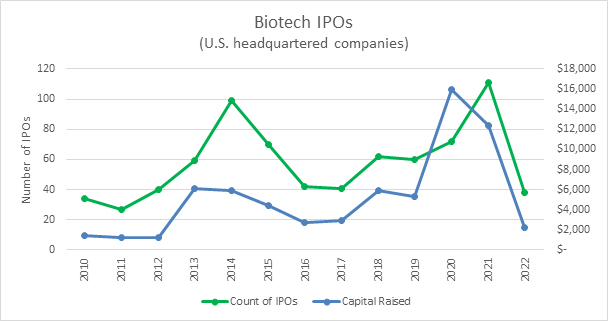According to the report, medium market companies are paying financing rates ranging from 10.9% to 15.5%, which are driving up the risk premiums on loans to nearly double digits. Furthermore, loans from commercial banks with rates below 5% are held by 34% of smaller middle-market companies ($10 million to $50 million in sales), while loans with rates between 5% and 7% are held by 24% of these enterprises. According to the analysis, there will be a further risk to cash flow when those loans must be rolled over in the upcoming years at higher interest rates.
According to Joe Brusuelas, chief economist of RSM US LLP, “the rising cost of doing business through higher rates is leading to a greater sense of risk across the middle market and the economy.” “One of the unique difficulties of this cycle is that real interest rates rise when inflation declines. That leads to a scenario where, in addition to commercial banks’ stricter lending, commercial and industrial loans become significantly more costly.”
The findings of the poll indicate that medium market companies are searching broader for funding. In the preceding year, 56% of the organisations surveyed said they had looked for traditional bank loans; this is a decrease from 74% in a 2015 RSM study of similar organisations. Furthermore, according to 53% of the executives polled, it would be less probable than previously for them to get funding from a commercial bank.
36 percent of middle market executives responded that they had resorted to the shadow banking system when asked where they are receiving finance. A total of 29% had used government loans, 60% had used private lending, 33% had utilised equity sources like private equity, 30% had mentioned digital banking and finance sources. Roughly 39% of respondents said they met their financial obligations with cash and retained earnings. Higher fees associated with atypical bank lending are another indication that the actual economy is under severe financial duress.
The total rate is 10.9% for businesses that require regular bank loans to fund payroll and company growth. Nonetheless, 21% of middle-market companies polled currently pay less than 5% on their current commercial bank loans, and 22% pay between 5% and 7%. This suggests a significant reset risk and reduced cash flows when those loans are refinanced in the upcoming years.
Businesses who use unconventional lenders pay an average annual percentage rate of 13.7%; smaller middle market businesses pay 10.5%, and those in the bigger revenue group ($50 million to $1 billion in annual sales) pay 14.7%.
The private equity industry is greatly impacted by the increase in real interest rates, since private equity companies are now paying four or five times as much to leverage their capital as they did 18 to 24 months ago. More consideration is being given by private equity companies to the use of debt financing and leverage in transactions. Some middle market transactions are taking longer to conclude because of a valuation gap that has formed due to the altered financing environment and increasing scrutiny on agreements.
Private equity is the one sector where the effects of higher rates are most noticeable, according to Brusuelas. “Using 10-year Treasury Inflation-Protected Securities as the benchmark, long-term real rates have averaged 0.26% over the last ten years, whereas rates have above 2% this autumn. Private equity businesses that employ debt to close acquisitions suffer the most from the rise in real interest rates.”
A change in transaction focus is also noted in the RSM study. Even though M&A activity is rising, smart smaller purchases with the goal of growing market share or footprint have replaced larger acquisitions.
Starting in the first quarter of 2015, Harris Poll conducted research on middle market enterprises, which served as the foundation for the RSM US Middle Market Business Index (MMBI). Every year, in the first month of January, April, July, and October, a survey is carried out. The survey panel, made up of about 1,500 middle market executives, is intended to fairly represent the state of the middle market.
The MMBI was developed in partnership with Moody’s Analytics and is based on a subset of survey questions that ask participants to describe changes in a range of variables. Twenty questions in all, modelled after questions from previous qualitative business surveys like the National Federation of Independent Businesses and Institute of Supply Management, are posed to respondents.
The 20 questions address shifts in a number of company metrics, including hiring, capital expenditures, earnings, sales, employee pay, prices received, and inventory. In addition, there are inquiries concerning borrowing and credit availability, as well as the state and prospects of the economy. Respondents are asked to report changes from the previous quarter for ten items, and their prediction for the next six months’ likely direction of the same indicators is asked for the remaining ten.
Diffusion indices are presented for each question’s replies. In order to prevent the MMBI from going negative, the diffusion indexes for 10 survey items plus 100 are added together to create the composite index known as the MMBI. The middle market is typically increasing if the MMBI reading is over 100; often declining if it is below 100. The strength of the expansion or contraction may be inferred from the distance from 100.
RSM is the top supplier of expert services to the middle class. Our clients represent the backbone of the world’s economy and trade, and we are committed to providing them with the best expertise and services possible to suit their changing demands in the rapidly shifting business environment of today. Our goal is to enable individuals and our clients to reach their greatest potential by instilling confidence in a world undergoing constant change.

